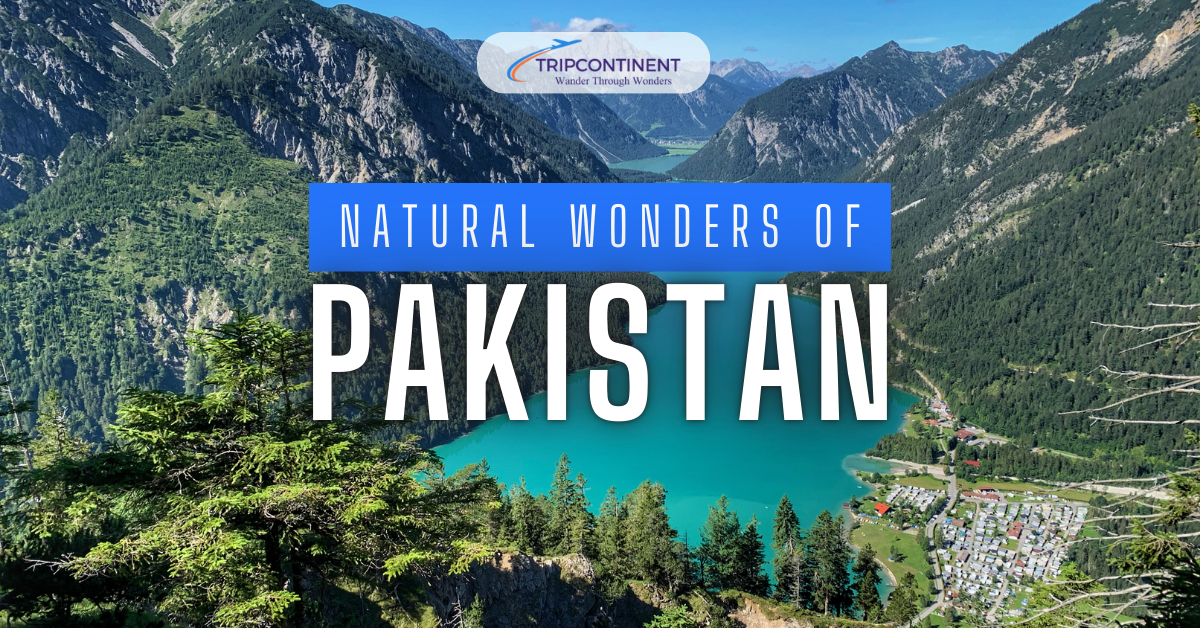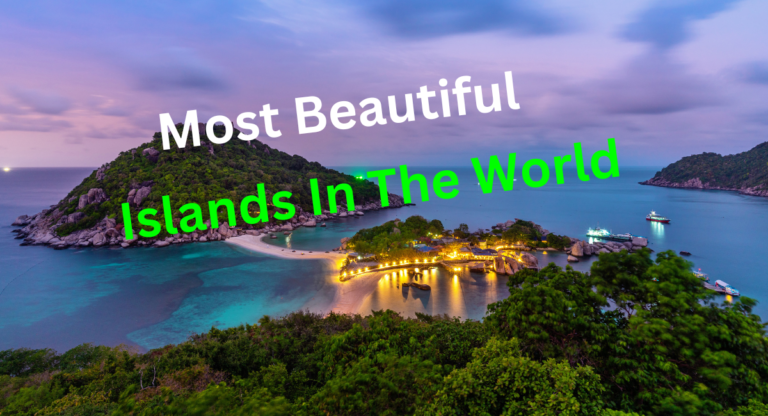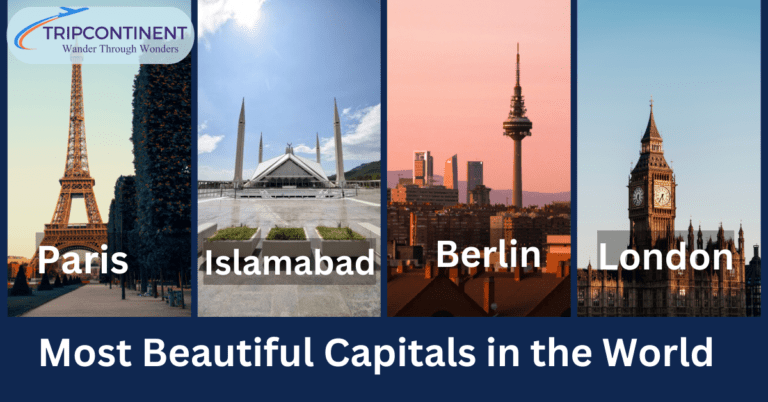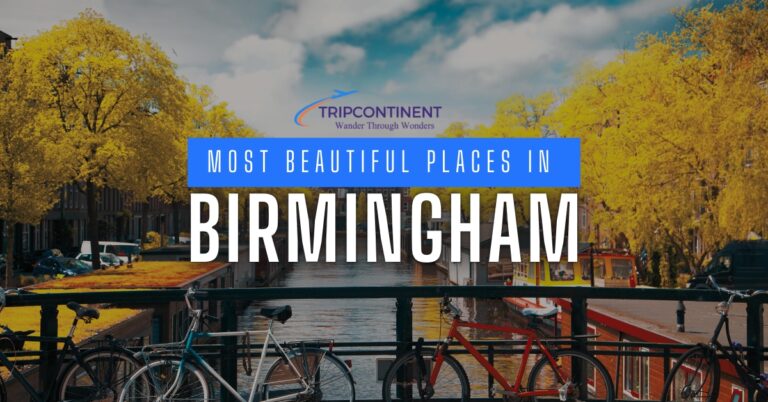Explore The Natural Wonders of Pakistan in 2024
Pakistan is a land of natural wonders consisting of breathtaking mountains, mesmerizing landscapes, crystal clear waterways, meadows, and more. The country offers a remarkable and diverse variety of scenery and has geography reviews like peak summits in northern areas, hills of Khyber Pakhtunkhwa, lush greenery, and captivating rivers. This beautiful land is home to the second-highest mountain K2, the third-highest Tirich Mir, and the world’s three highest mountain ranges including Hindu Kush, Karakoram, and Himalayas. Let’s explore more about the country’s top natural wonders.
List of the Top 12 Natural Wonders of Pakistan
Here is the list of the top 12 natural wonders of Pakistan
- Hunza Valley
- Neelum Valley
- Swat
- Deosai National Park
- Fairy Meadows
- Attabad Lake
- Shogran
- Skardu
- K2
- Saif Ul Malook Lake
- Naltar Valley
- Murree
1. Hunza Valley
Located in the Gilgit Baltistan region of Pakistan, Hunza Valley is known for its stunning natural beauty. This Pakistani natural wonder also earned the title of “Paradise on Earth.” The valley creates a dramatic and awe-inspiring landscape, surrounded by snow-capped peak mountains like Rakaposhi. Combine nature with history with a steep walk up to 800-year-old Baltit Fort, explore the magical village, interact with locals, and score the freshest apricots in the Hunza Valley.
During the winter season, this lush green slice of paradise surprisingly transforms into a snowy wonderland. Nature enthusiasts can find solace in its serene environment while adventure lovers can indulge themselves in trekking, rock climbing, and witnessing the changing colors of the landscape through the seasons. Visit Attabad Lake, a popular attraction for boating and photography.
Best Time to Visit: May to October
Read More: Most Beautiful Places in KPK
2. Neelum Valley
Nestled in the mountainous region of Azad Kashmir, Neelum Valley is one of the incredible places presenting nature’s artistry. This bow-shaped valley is renowned as the “Blue Gem” of Azad Kashmir. Its diverse landscape comprises dense pine forests, alpine meadows, gushing waterfalls, snow-capped peaks, and crystal-clear streams, creating a mesmerizing tapestry of natural beauty.
Extending over 144 km of area, the valley follows the Neelum River, which carves its way from lush green forests to towering mountains. The valley is a land of various breathtakingly beautiful villages, which offer a glimpse into the rich culture and hospitality of locals. Immerse yourself in adrenaline-rushed activities including trekking, fishing, and camping.
Best Time to Visit: April to October
3. Swat
Swat, one of Pakistan’s natural wonders, is also renowned as the “Switzerland of the East”. Surrounded by snow-covered mountains, the valley lies in the Khyber Pakhtunkhwa province of Pakistan. While offering a unique combination of natural beauty and rich history, the picturesque landscape captivates visitors all across the planet.
The valley is home to several famous attractions including ancient Buddhist ruins, serene lakes, and dense forests. Its mild summers and snowy winters make it an ideal destination for all seasons. Visit the valley from March to May to experience the colorful blooms and pleasant winds of Swat.
Whether you’re a nature lover or a history buff, Swat will provide you with a truly unforgettable experience through its stunning scenery, archeological sites, and warm hospitality.
Best Time to Visit: April to October
4. Deosai National Park
Deosai National Park, the land of Giants, is a high-altitude alpine plain and national park, situated between the Astore District and Skardu District. An average elevation of 4,114 meters above sea level makes the Deosai Plains the world’s highest plateau after the Changtang Tibetan Plateau.
This Pakistani popular place is also renowned as an internationally important site for the protection and conservation of the Himalayan Brown Bear, a critically endangered species.
Deosai Plain is a hidden gem that exists in Himalaya’s heart, offering unparalleled beauty and tranquility.
Experience the natural wonder of Pakistan, and let the sheer vastness of Deosai Plain take your breath away. At this wonderful place, you’ll surely be captivated by the ethereal charm and untouched landscapes that stretch as far as the eye can see.
Explore the rolling meadows blanketed in a sea of wildflowers, framed by majestic snow-capped mountains, creating a surreal and breathtaking sight.
Best Time to Visit: Last two weeks of August
5. Fairy Meadows
Situated at the base of the world’s ninth highest mountain Nanga Parbat, Fairy Meadows, also famous as “Joot” offers breathtaking views of Nanga Parbat’s Rakhiot face and the surrounding snow-covered mountains. At an altitude of about 3,300 meters above sea level, this wonderful spot serves as the launching point for mountaineers summiting Nanga Parbat by the Rakhiot face.
The night sky is especially spectacular, which provides a clear view of stars and the Milky Way. People all around the world come to experience this particular wonder at Fairy Meadows.
Take a jeep ride on a narrow mountain road followed by a trek or horse ride, and enjoy the view of a serene landscape of grassy fields dotted with wildflowers, surrounded by dense pine forests.
Best Time to Visit: June to September
Read More: 12 Coldest Countries in the World
6. Attabad Lake
Attabad Lake is one of the most beautiful places of Pakistan, located in Gojan Valley, Hunza. The majestic lake is 14 km long and formed after the landslide that dammed Hunza River in 2010. This place, full of chilly blue water, is a proof of heaven on earth. Immerse yourself in an abundance of water activities at the lake, including boating, jet-skiing, and fishing.
During the winter season, it gets frozen and transforms into the perfect place for ice skating. If you’re a good swimmer, then give a try to deep dive into its blue water, otherwise you can use swimming accessories for a better experience.
Best Time to Visit: April to September
7. Shogran
Shogran, a land of natural wonder, is situated in Khyber Pakhtunkhwa about 34 km from Balakot. Its awe-inspiring landscape comprises lush green meadows, dense pine forests, and panoramic sight-seeing of snow-covered mountain summits such as Nanga Parbat and Makra Peak.
Shogran is a place of pristine beauty, offering an incredible experience via changeable views on every step. Take a ride towards the breathtaking hill station and inhale fresh air at the top of the lush green mountain. Enjoy the pleasant weather in the summer season, comfortable for trekking, picnicking, and eye-mesmerizing scenery.
Best Time to Visit: June to August
8. Skardu
Skardu is one of the oldest cities of Pakistan, located in the Gilgit Baltistan region. From frigid winters to breathtaking mountains, trekking, and adventurous destinations, the place is well-renowned among tourists all over the world. The highest snow-capped mountains entitle the place as “Climbers Paradise.”
K2, the world’s second-highest summit, also lies on its outskirts. Plan a day trip to Upper Kachura Lake and experience adrenaline-rushed activities including speed-boating, jet-ski, zip line, and swimming, or simply sit to find solace in nature.
Whether you visit this beautiful place in summer or winter, you’ll get a retreat of pleasant weather, a diverse array of adventurous activities, various tourist attractions, and hospitable locals.
Best Time to Visit: April to August
9. K2
K2 is the second highest mountain after Mount Everest, and lies in the Karakoram range, Pakistan. At an elevation of 8,611 meters above sea level, it is partially in the Gilgit Baltistan region and partially in the China-administered Trans-Karakoram Tract. K2 is also known as “The King of Mountains” and “The Mountaineer’s Mountain.”
Trekking to this mountain is physically and mentally demanding, and requires a high level of fitness, preparation, and experience. The snow-covered K2 is a savage mountain that tries to kill people. As of August 2023, about 800 people had summited K2, with 96 deaths during attempted climbs.
Best Time to Visit: June to August
Read More: Cold Places in Pakistan
10. Saif-Ul-Malook Lake
Lake Saif-Ul-Malook is a dream place, located at the northern end of Kaghan Valley, Pakistan. It is famous as one of the country’s highest lakes, with an elevation of 3,224 m above sea level. This majestic lake carries lots of interesting mystical tales of fairies and princes due to its undefined beauty. About 300,000 years back, the lake was formed in the greater Pleistocene period.
Saif-Ul-Malook Lake looks mesmerizing in shiny daylight and leaves an awe-striking impact on travelers through its nighttime beauty. Experience horse riding or boating during the summer season, and ice sliding in winter. Enjoy camping here at night to witness the Milky Way with billions of stars. If you’re looking for an unforgettable shot, visit this epic place where the mountains and lake view is undeniable.
Best Time to Visit: June to September
11. Naltar Valley
Naltar Valley is an all-weather destination, and famous as a tourist attraction that provides soothing calm away from the hustle of the mainland. It is situated about 34 km from Gilgit city, Pakistan. This natural wonder is home to large mammals such as the Alpine ibex, the snow leopard, the brown bear, the gray wolf, the red fox, the beech martin, and the leopard cat.
The valley consists of six beautiful lakes, known as Satrangi Lake, Halima Lake, Bodo Lake, Dhudia Lake, Pari Lake, and Blue Lake. Milky ways in the nights, skies full of stars, and gleaming lights of small but serene cottages make the place more incredibly attractive. From a helipad to barrier-free running Brookes and organic potatoes to captivating lakes, the valley is an indescribably amazing miracle of nature.
Best Time to Visit: May to October
12. Murree
Murree is a mountain resort city, lies in the Galyat Region of the Pir Panjal Range, Pakistan. Its diverse landscape offers various tourist attractions including Nathia Galli, Kashmir Point, Mushkpuri Top, and Pindi Point. The scenic beauty, lush green hills, and cool climate make it a popular hill station and family-friendly destination over the country.
Murree isn’t always frigid, offering a comfortable environment. People around every corner of Pakistan come here to enjoy snowfall that starts in early November and continues until late February. It’s a perfect getaway far from the heat of the plains.
Get an escape from the hustle and bustle life of urban cities, as it is a dream place for those seeking a combination of natural beauty and mental relaxation.
Best Time to Visit: April to October
Conclusion
Pakistan is a blessed country in South Asia, fortunate to have ethnic, cultural, and linguistic diversity. This beautiful country is known for its breathtaking landscapes, offering a diverse array of natural wonders ranging from Hunza Valley to Swat, Skardu, and Saif Ul Malook Lake. The pristine waterways, hilly areas, and lush green forests make it a must-visit place for tourists around the world. These incredibly attractive destinations showcase the country’s varied landscapes, allowing nature enthusiasts to sit and admire the beauty of nature.
FAQ’s
Does Pakistan Have Beautiful Nature?
Yes. Pakistan is a beautiful country with a diverse landscape, ranging from hilly areas to lush green valleys and mountainous regions.
What Natural Wonders Are in Pakistan?
The country boasts a diverse array of natural wonders such as Hunza as the paradise on earth, majestic K2 mountain, awe-inspiring Saif-ul-Malook, and much more.
What Are India’s Natural Wonders?
India also consists of a variety of natural wonders including the Himalayas mountain range, the Sundarbans mangrove forest, the Rann of Kutch, the Valley of Flowers, and the Andaman and Nicobar Islands.
Does Pakistan Have Natural Resources?
Pakistan’s blessed land also mines numerous natural resources. It consists of precious and semi-precious minerals such as topaz, ruby, and emerald. Additionally, marble, granite, chromite, coal, gold, iron ore, gypsum, lead zinc, crude oil, and natural gas are the country’s potential and valuable minerals.
What Is the Natural Beauty of Pakistan?
The country’s landscape comprises soaring mountain ranges, pristine lakes, lush green valleys, and forests, presenting the natural beauty and attracting tourists worldwide. The most famous landmarks including K2, Deosai Plains, and the Swat Valley make it well-known across the globe.

I’m Sophia Jones, an adventurer at heart from New York City, USA. I live for travel and exploration, always eager to discover new places, meet fascinating people, and try out diverse cuisines. Over the past few years, I’ve traveled to numerous countries, immersing myself in different cultures and creating unforgettable memories.






